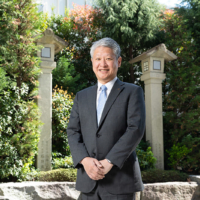As soon as the weather starts to get chilly in this country, it seems that peoples' minds turn to two things: yu (湯, hot water) and nabe (鍋, hot pot). Anyone staying in Japan longer than a year will have noticed it — as a nation, Japanese are hopelessly samugari (寒がり, prone to being cold). Out on the streets, visitors from overseas wander around smiling in shorts and T-shirts; many Japanese bend their backs in the akikaze (秋風, autumn breeze), their hands pulling together the lapels of their overcoats.
Theories abound as to why the Japanese feel cold most months out of the year; the one I recall most readily is that we are thin-skinned and therefore poorly equipped to combat the perpetual shikke (湿気, humidity) that defines the weather, whatever it happens to be.
My grandmother claimed that she never felt hot enough any time during her entire life to wear short sleeves, and she shivered at the sight of her granddaughters traipsing around the house in tank tops and cutoffs in sultry mid-August. She held that such shameless attire usually brought on natsukaze (夏風邪 summer colds) and urged us to take hot baths instead of showers. Actually, she marched us into the tub for everything. "Hie wa manbyō no moto (冷えは万病のもと, a chill is the source of all ills)"?was one of her maxims in life, followed by "yu ga ichiban no kusuri (湯が一番の薬, hot water is the best medicine)." To back it up, she always kept the kettle boiling and the bathroom immaculate. Indeed, over the years we learned how a hot bath followed by a hot cup of tea relieved most kinds of pain and stress; to this day, the women in my family are hot-water fetishists, renowned for spending inordinately long periods in the bathtub, even during the hottest days of summer.
















With your current subscription plan you can comment on stories. However, before writing your first comment, please create a display name in the Profile section of your subscriber account page.